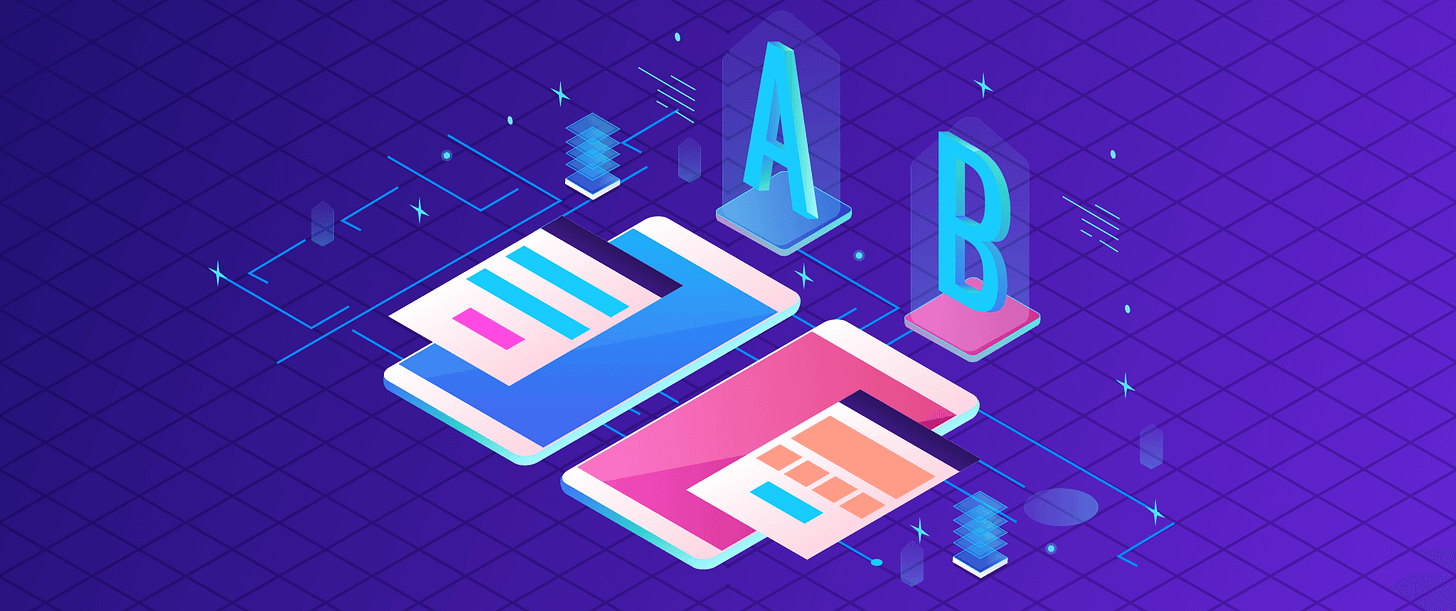Growth Design 101: What the Heck is it?
One of the most valuable niches to learn for the left brained designer.
Introduction
As I’ve mentioned a couple of times in the past, the domain I’ve chosen to focus on is within startup consumer products (although I think I should narrow this down to a specific industry at some point), and the niche is within growth design (user acquisition and retention). Seeing as most new designers tend to work for startups who value growth over profit, I figured explaining the foundation of growth design and its processes would be helpful.
The Required Skills
Growth design is a newer sub-field in design that examines how to scale the business while staying in tune with user needs. Growth designers are responsible for creating the optimal sustainable experience that nets more long-term engaged users. This kind of design involves rapid data-driven iteration, lots of experimentation, and an understanding of organic and paid growth strategies. Organic growth includes word of mouth (yes, this can be designed and tracked through direct traffic & NPS), referrals, and SEO. In general, paid channels refer to ads and marketing.
A growth designer would also benefit from a solid foundation in branding, visual design, interaction design, content writing, psychology, data, research, gamification, experimentation, and SEO. However, these are not hard requirements; these skills might be more or less important depending on the kinds of consumer products you’re interested in building.
Growth Design Scope
Another distinction between growth design and conventional product design is its breadth of work. Most product designers are embedded on a specific team that owns a particular surface area (e.g., onboarding, dashboard, home feed, ads, etc.).
Growth designers on the other hand look at the experience holistically and create hypotheses for experiments (minor tweaks) across many surface areas with the ultimate goal of improving customer acquisition and retention.
The Growth Design Process
Unlike conventional design processes, most of the design iteration is based on post-launch data instead of pre-launch user research (due to the experimental nature of growth design.)
Here’s an example of how these two approaches differ. Let’s say you’re a designer on the onboarding team that owns the sign-up user flow. Your north star metric is probably the conversion rate on signups. You would probably design a lot of different sign-up flows and forms to increase that metric. However, the scope of your design thinking would still be constrained within your surface area.
“Growth has an opportunity to determine the fundamental strengths of your product across the entire and an important conversation for designers to be involved in.”
—Angel Steger, Director of Growth Design, Dropbox
On the other hand, a growth designer isn’t constrained to just the sign-up flow, they would look at the entire funnel starting from awareness all the way to conversion. Instead of looking at just the conversion rate on the sign-up button, they would also consider how to improve the click-through rate (CTR) of their ads and the bounce rate on the landing page.
Metrics vs. Impact
Sometimes growth experiments can have positive business outcomes that are bad for users. Therefore, you shouldn’t be fixated on only moving metrics without considering how your proposed changes influence the overall experience. Remember the core metrics for growth design is the number of engaged users using the product. It's never worth improving short-term proxy metrics like CTR at the expense of long-term user retention and engagement. The goal is to build a sustainable growth loop, not something that seems promising on its face but is really churn and burn behind the scenes.
With unethical dark patterns, you can trick users into doing things, but they're only going to fall for it so many times. You will also irreparably damage your users’ trust which can really make or break your product’s success nowadays (remember the whole “uninstall _____” campaign on Twitter?) Instead, push an experience that really addresses the nuances of their emotions—that's when growth will drive repeat behavior and start building user habits.”
Conclusion
In conclusion, I believe growth design provides immense value to all businesses (although there’s a disproportionate impact on startups). As of this year, it's still a niche role requiring rare skill sets that most designers don’t have. If you have a natural curiosity towards growth problems or have relevant context, it’s a fantastic domain to focus on.
Don’t forget to subscribe to get all the updates!
These emails might end up in your spam or promotions tab. To fix this, drag the emails back to the inbox or add ambitiousdesigner@substack.com to your contact list or send a reply.


